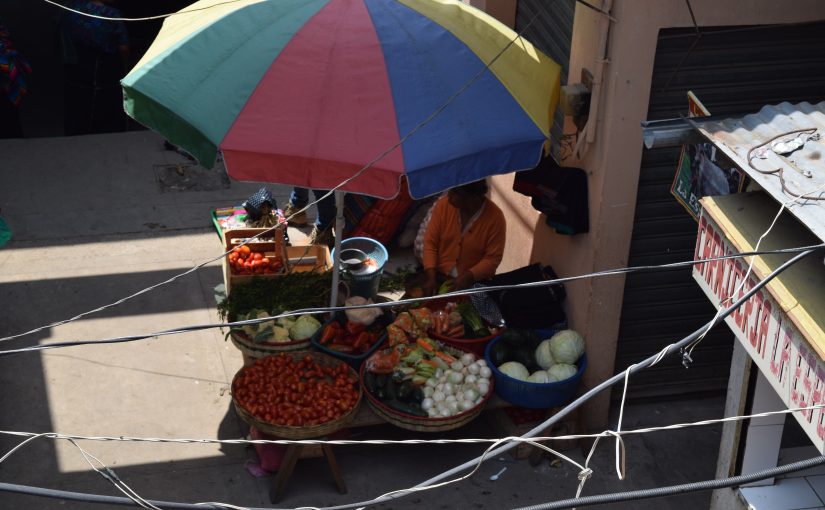Passive II (or completive passive), in contrast with Passive I, focuses on the result of the event/action or on the resulting state. It conveys that an action has been completely finished. A common use is in descriptions of processes, such as describing a recipe (once x is done, then…). We will see an example in our tzijonik, in which Nan Xe’p explains how to make sub’ (tamales), typically used to accompany meals.
In the following video, Nan Xe’p explains the process of making sub’:
Passive II focuses on the result of the event/action or on the resulting state. The passive II suffix is –(V)taj which is used with both root (CVC) and derived transitives (non-CVC). The vowel V of the suffix –(V)taj is often dropped. It is usually the root vowel when present. Since these verb forms are intransitive, they take –ik when phrase final.
Examples:
kunaj: to heal; to cure
The women treated the girl.
The girl was healed (by the women).
The girl was healed.
B’an(o): to do
He/she is doing it; He/she does it; He/She will do it.
It is being done; It is done; It will be done.
It is getting (completely) done; It is (completely) done; It will be (completely) done.
In the completive passive (Pasive II) underlying agents are optionally introduced by utilizing E-umal:
La x-kunataj le ali aw-umal?
Was the girl healed by you?
Phrases that express an impersonal subject like “one can…X” or “it can be X-ed…” are expressed in K’iche’ with the completive passive (passive II).
It can be understood.
It can be learned.
It can be arranged.
One can be cured; One will get better.
I am not going to do it. Lit: It will not be done by me (this is what you can answer as a response to someone asking you to do something for that person)
Irregular passive forms
| Active | Passive I | Passive II |
| B’an(o) | b’an(ik) | b’antaj(ik) |
| Tij(o) | tij(ij) | tijtaj(ik) |
| Elesaj/Esaj | elesax (only) | |
| Ta (to, phrase final) | ta(ik) |
| nab’e | first… |
| k’a te k’u ri | then…/after… |
| si’ | firewood |
| iyej (vit) | to wait |
| pis(o) vtr | to wrap |
| ch’aj (vtr) | to wash |
| nuk’ (vtr) | to light (a fire) |
Using the following verbs, and following Nan Xe’p’s example, explain the process of making coffee:
Le Kape
| Q’ol kape | to pick coffee |
| Sa’ | to dry |
| K’ilij | to (dry) roast |
| Jok’ | to grind |
| K’ayij | to sell |
| Loq’ | to buy |
| Nuk’ le q’aq’ | to build a fire |
| Ch’aj le k’olb’al | to wash the coffeepot (container) |
| K’aq puwi le q’aq’ | to put (the pot) on the stove |
| K’aq le saqli/joron chupam | to put water in (the container) |
| K’aq le jok’om kape | to put the ground coffee in |
| Ch’u’q | to cover (with lid) |
| Poq’owik | to boil |
| Q’ij | to serve/pour coffee (and other hot liquids) |

